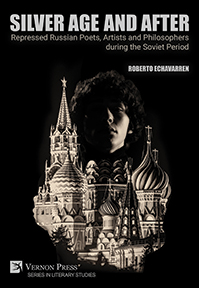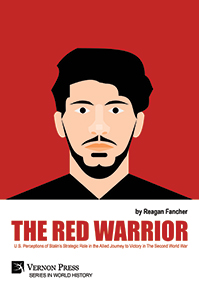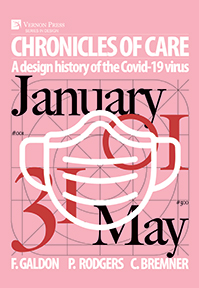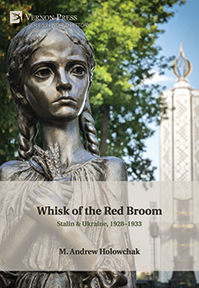Search
Browse
by Publication status
by Subject
Anthropology (26) Art (126) Business and Finance (27) Cognitive Science and Psychology (54) Communication and Journalism (48) Economics (63) Education (70) History (150) Human Geography (22) Interdisciplinary (43) Language and Linguistics (134) Law (16) Music Studies (19) Philosophy (158) Political Science and International Relations (103) Sociology (314) Statistics and Quantitative Methods (21)by Series
Series in Literary Studies (67) Series in Philosophy (59) Series in Education (54) Series in Sociology (45) Bridging Languages and Scholarship (33) Series in Politics (32) Series in World History (32) Series in Language and Linguistics (25) Cognitive Science and Psychology (20) Series in American History (20) Series in Philosophy of Religion (20) Series in Art (19) Critical Perspectives on Social Science (17) Series in Cinema and Culture (16) Series in Critical Media Studies (16) Curating and Interpreting Culture (15) Series on the History of Art (14) Economics (14) Series in Anthropology (13) Series in Business and Finance (13) Series in Music (12) Series in Communication (9) Series in Performing Arts (9) Philosophy of Personalism (8) Series in Law (8) Series on Climate Change and Society (8) Series in Economic Methodology (7) Women's Studies (7) Classics in Economics (6) Series in Economic Development (6) Philosophy of Forgiveness (5) Series in Built Environment (5) Series in Economic History (5) Series in Social Equality and Justice (5) Series in Philosophy of Science (4) Series on the History of Science (4) Serie En Estudios Literarios (3) Serie en Sociología (3) Series in Contemporary History (3) Series in Creative Writing Studies (3) Series in Design (3) The Interdisciplinary Built Environment (3) Serie en Comunicación y Medios (2) Serie en Historia (2) Serie en Música (2) Series in Heritage Studies (2) Series in Innovation Studies (2) Series in Philosophy of Race (2) Serie en Ciencias Políticas (1) Serie en Entorno Construido (1) Serie en Estudios Culturales (1) Serie en Filosofía (1) Serie en Filosofía de la Ciencia (1) Serie sobre Cambio Climático y Sociedad (1) Series in Classical Studies (1) Series in Economics of Technological Change (1) Series in Urban Studies (1)by Language
English Spanishby Author
Browsing with filters

Sintiendo el calor: Perspectivas internacionales sobre la prevención de la ignición de incendios forestales
Janet Stanley, University of Melbourne
et al.
Availability: Forthcoming
$63 £47 €53
| Altamente recomendado por CHOICE, julio de 2021 Vol. 58 No. 11 En el contexto del cambio climático, el crecimiento de la población mundial y el colapso de los sistemas ecológicos, los incendios forestales suelen ser un acontecimiento catastrófico y traumático. Su impacto puede incluir la pérdida de vidas, lesiones que cambian la vida, estrés psicológico a largo plazo; aumento de la violencia doméstica; destrucción de propiedades, negocios y ganado; inseguridad en la vivienda a largo plazo; aumento de las primas de seguros, de los costes de extinción de incendios, legales y sanitarios; así como cambios significativos y pérdidas de especies en el entorno natural. “Sintiendo el calor: Perspectivas internacionales sobre la prevención de la ignición de incendios forestales” es la culminación de más de una década de investigación sobre los incendios forestales y provocados, y adopta un enfoque interdisciplinar para comprender el tema de forma exhaustiva. Este libro revisa los conocimientos internacionales actuales y presenta nuevos hallazgos sobre los factores de riesgo políticos, espaciales, psicológicos, socioecológicos y socioeconómicos. En él se argumenta que si queremos invertir la tendencia al aumento de la incidencia y la gravedad de los incendios forestales, hay que utilizar todos los enfoques de prevención, ampliando la dependencia de la modificación del medio ambiente. Tales medidas de prevención van desde la importancia crítica de reducir los gases de efecto invernadero hasta el tratamiento de los factores psicológicos y socioeconómicos que provocan los incendios. En particular, se aboga por un enfoque coordinado y colaborativo entre sectores, que incluya la coordinación a nivel local, estatal y nacional, así como un organismo internacional. La obra resultará de interés para investigadores y estudiantes de distintas disciplinas e intereses, planificadores y responsables políticos, servicios de emergencia, asesores y ONG, así como para el sector agrícola y forestal.
Silver Age and After: Repressed Russian Poets, Artists and Philosophers during the Soviet Period
July 2024 / ISBN: 978-1-64889-020-8Availability: In stock
270pp. ¦ $79 £63 €74
The details of the Jewish Holocaust have become part of our history through the testimony of those who survived the death camps. The details of Lenin’s and Stalin’s reign of terror are far less known because they took place behind a wall of secrecy, and because survivors have been loath to speak about them for fear of retribution. This is an encompassing volume presenting an intense display, as complete as can be, of poets, artists, musicians, and philosophers and intellectual actors implicated in different aspects of Russian life roughly through the period 1900-1960. They were people who had lived under the Soviet regime in times of peace and in times of war, from the Red Terror through the Great Terror. One must bear in mind the political and economic conditions in which those lives developed: the one-party rule placed above both the government and the citizens, the abashment of the division of powers, the suppression of private property and private economic initiative, the political police, and the GULAG. I deal with the poets in several chapters, then theater directors, then composers, then philosophers (these both in the introduction and in the play at the end of the book). Besides the Prologue and Introduction, the reader will find an Index of historical names, plus an extensive Bibliography. The work can be used for reference, for classroom adoption, for researchers/practitioners of Russian Literature, Political Studies, Slavic Studies, and Russian History.
The Red Warrior: U.S. Perceptions of Stalin’s Strategic Role in the Allied Journey to Victory in The Second World War
Reagan Fancher, Texas Woman’s University
Availability: In stock
274pp. ¦ $81 £65 €76
Through U.S. President Franklin D. Roosevelt’s Lend-Lease program, American leaders sought to keep Joseph Stalin’s Red Army in the field and fighting Adolf Hitler’s forces in the Second World War from 1941 forward. Delivered by the Anglo-American Arctic naval convoys, overland through the Iranian deserts and mountains, and through the skies from Alaska to Siberia, this much-needed material aid helped Stalin’s Red Army to continue fighting and thereby prevented a separate peace with Hitler’s Germany and a mechanized repeat of the First World War’s Brest-Litovsk fiasco. Yet Roosevelt and other U.S. officials, due to their severe underestimation of Stalin’s character and his rigid and fanatical devotion to exporting Communism at gunpoint, gambled incorrectly that they could win the Soviet premier’s heart and mind through several excessive wartime aid gestures, including the furnishing of atomic bomb materials to the Soviet regime. By 1945, American leaders had succeeded in their strategic goal of keeping Stalin and his Red Army in the war and hastening victory but failed in their efforts to purchase the Soviet premier’s goodwill and commitment to postwar peace, heralding the global Cold War, and setting the stage for later U.S. martial aid programs to those resisting aggression abroad. In addition to its primary focus on the American leadership’s perceptions of Stalin’s strategic importance to the Allied war effort in the Second World War, this work also includes a detailed assessment of Roosevelt’s Soviet Lend-Lease program alongside U.S. President Ronald Reagan’s later support for the Afghan Islamic guerrillas resisting Soviet occupation during the Soviet-Afghan War of the 1980s and a comparison of both martial aid programs with Washington’s recent revival of Lend-Lease aid for the Ukrainian war effort. It offers today’s American leaders and policymakers a chance to consult the lessons of history and apply them in the present.
Chronicles of Care: A Design History of the COVID-19 Virus
Fernando Galdon, Royal College of Art, UK
et al.
Availability: In stock
372pp. [Color] ¦ $97 £77 €90
The Covid-19 crisis and the designed interventions that the authors have catalogued in this book prove definitively that design does care. The authors documented this as it evolved every day from the 1st January 2020 to 31st May 2020 inclusive. Then they looked at all of this care and caring from the point of view of design and, by the sheer volume of design interventions they have documented, illustrate that design is good in a crisis. What the Covid-19 pandemic illustrated is that for the first time in modern history, capital was totally irrelevant. Money could not save your life. Only design could. Rapidly designed masks, shelters, hospitals, instructional posters, infographics, dashboards, respirators, sanitisers, virtual and local communities emerged to save us. From January 2020, design became king. The Covid-19 global pandemic presented an ontological reality; design is more than margins or profit. In fact, design became extremely valuable when it stopped concentrating on those things and started to care about peoples’ lives. This brief episode in history is still repositioning the status of design and reconfiguring its signifier from consumption to care. The contents of this book cover the outbreak, lockdown, and the beginning of the reopening in the UK. In between, the book functions as a history of pandemic crisis design interventions. As such it is a “research-in-the-moment project” where we have illustrated our thoughts and insights in tables, charts and diagrams. We have accepted all design interventions as valid and given them the same role and status by presenting each of them in a standard format. No curation. No selection. No position. The task of critical analysis must follow – perhaps by us, certainly by others.
Whisk of the Red Broom: Stalin & Ukraine, 1928-1933
April 2024 / ISBN: 978-1-64889-860-0Availability: In stock
262pp. ¦ $72 £58 €67
Once Joseph Stalin took the lead of the Soviet Bolshevists after the death of Vladimir Lenin, he quickly turned away from Lenin’s New Economic Policy, with its many concessions to capitalism, to a policy of one-country socialism, driven by his first Five Year Plan (1928) and a plan that other Bolsheviks like Lenin and Trotsky thought impossible. That shift, radical, forced Stalin to “urbanize” the USSR’s vast rural areas—that is, to impose a factory-like model on the Soviet countryside to maximize its efficiency. That required collectivizing the numerous Soviet farms—making large farms of the numerous small farms. Ukraine was to be the model republic due to its vastness and black, fertile lands. Not only were the republics to be collectivized, they were also to be Russified for the sake of model efficiency and centralization of control. And so, while Stalin, early in his political life, preached respect for the cultural diversity of its many republics and the right of secession of any republic, the need to collectivize the Soviet farms for the sake of one-country socialism demanded compliance. Ukrainian peasant-farmers were non-compliant, for they readily saw that the State was asking them for everything and giving back nothing but the pledge of efficient farms to benefit the State, and non-compliance forced Stalin’s authoritarian hand. He imposed laws that brutally punished non-compliant peasants, called “kulaks.” The plan was dekulakization. The intransigents were dispossessed of their property, alienated from other villagers, exiled, and exterminated. The result in Ukraine was the gross inefficiency of both collective and individual farms. That led to intolerance of Ukrainian culture and theft of Ukrainian grain, and even all other findable foodstuffs, to punish Ukrainians. The end was a great famine in 1932 and 1933 in which some four million Ukrainians died. Did Stalin believe that he could urbanize the Soviet countryside? Did Stalin think that socialism could take root in the backwater Soviet Union without the aid of Western succor? Did Stalin hate Ukrainians because many pressed for a cultural identity separate from that of Russia? Had Stalin’s plan of dekulakization from the beginning been a policy of political genocide? Those are some of the many questions I aim to answer in this book. I focus much on Stalin’s writings in the efforts to ascertain his mindset as a dictator.






